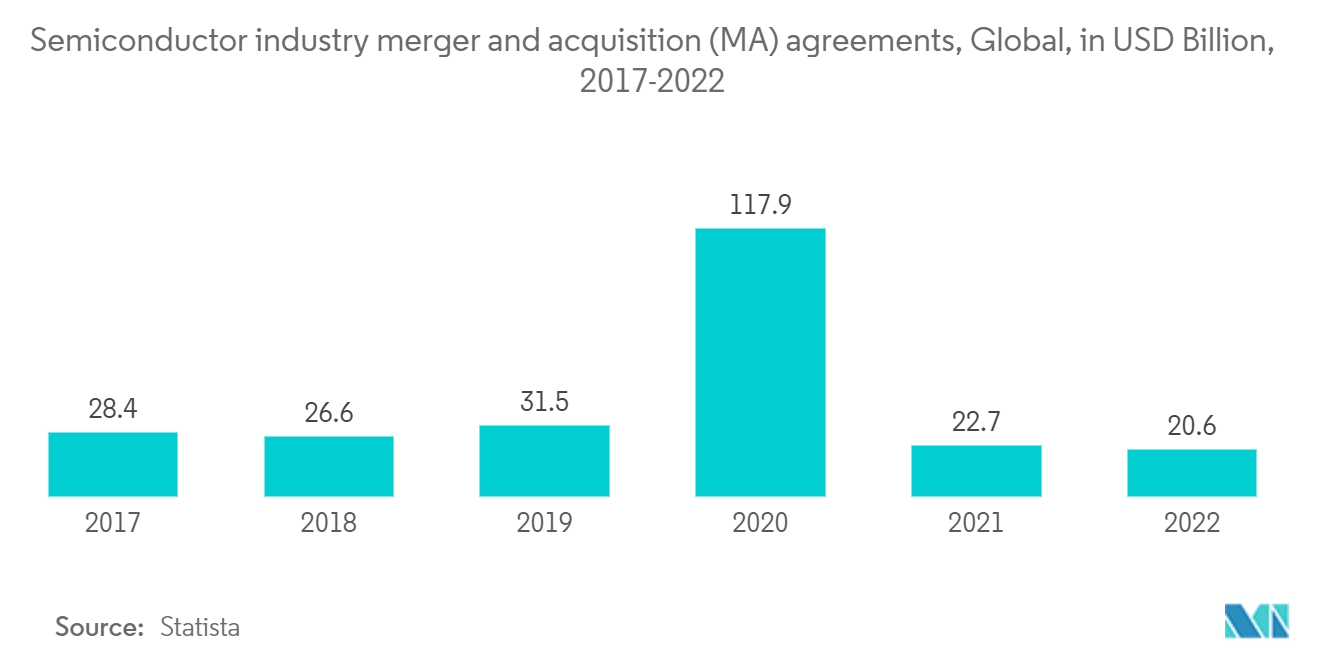Market Trends of Semiconductor Logistics Industry
This section covers the major market trends shaping the Semiconductor Logistics Market according to our research experts:
Increasing demand for semiconductor driving the market
Since 2020, the global chip shortage has worsened, with price increases being the semiconductor industry's defining trend. Upstream material and equipment manufacturers are facing supply shortages, chipmakers have increased investments to expand their product lines on occasion, and downstream semiconductor companies have made significant profits. Overall, the supply shortage of panel drive IC, consumer-grade MCU, memory chips, and other products have begun to ease, signalling the start of a price decrease. However, some power semiconductor chips, particularly those used in automotive, industrial control, IoT, and other fields, remain scarce.
The primary reason for this is that DRAM has quickly entered a downward price trend as the market undergoes cyclical changes. South Korea, the world's largest memory chip producer, has seen the largest increase in chip inventory in more than four years. According to statistics released by the South Korean statistics office in June 2022, the country's chip inventory increased by 53.4% over the same period in 2021 and has been steadily increasing since October 2021. As demand for smartphones, PCs, and consumer applications falls, global demand for memory chips used in electronic products falls. Despite relatively strong server demand, memory chip prices will continue to fall in the second half of 2022 as a result of high inventory levels.
The consumer market's downward trend has accelerated the cyclical changes in the storage market, and MCU chips are also affected. Consumer electronics, as represented by mobile phones and computers, have shown a downward trend in recent years, with likely negative growth in the entire year of 2022. According to this trend, news circulated in April of this year that terminal chips for consumer electronics could face up to 30% order cancellations, putting huge inventory pressure on the supply chain and terminal manufacturers who were busy preparing goods. Order cancellations from consumer electronic terminals have now gradually spread to chip manufacturers.

Increasing use of advanced technology and value-added services driving the market
Key decisions are made with insufficient insight as there is less visibility in the semiconductor supply chain and logistics. Leaders must be able to see their options and compare different courses of action as truck markets fragment and shipping container costs spiral. However, this requires centralized, dependable real-time data. While 83% of businesses say they are more aware of the risks associated with transportation blockades than they were before the pandemic, they still need to find the right technology to enable proper visibility. The pandemic exemplified how disruptive a single event can be, causing cascading effects across entire semiconductor supply chains. This highlights the critical importance of supply chain flexibility - the ability to adjust material purchases, production levels, and transportation capacity to meet demand. However, acknowledging this proves extremely tough.
Overreliance on single partners in semiconductor supply chains is a problem. To ensure the resilience of their supply chains, semiconductor companies require access to multiple partners, whether it's a material supplier, manufacturing base, or freight provider. Gaining access to multiple partners, on the other hand, is not so simple, especially when many brokers have hidden biases. This means that leaders must either navigate multiple highly complex markets on their own or find a partner who can connect them with providers with complete impartiality. Another issue is trust: flexibility necessitates companies having multiple providers they can trust to comply with regulations. This means they must either conduct extensive due diligence or find a partner to whom they can delegate this responsibility in complete transparency.


